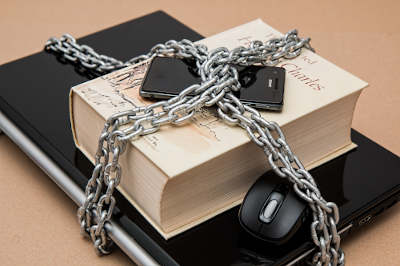Protecting Copyright
Fact sheet P-02
Issued: April 2000 Last amended: 12th June 2025
Fact sheet P-02: Protecting copyright
 This fact sheet has been produced to help authors of original works identify potential problems and understand how to more effectively protect their rights. The following points are recommendations aimed at minimising future risks.
This fact sheet has been produced to help authors of original works identify potential problems and understand how to more effectively protect their rights. The following points are recommendations aimed at minimising future risks.
- Copyright notices
The notice should be obvious and legible, and if applicable, (e.g. web sites) the notice should appear on every page.
Mark any copies of your work with a notice, on the body of the work as well as the cover or sleeve.
The notice should take the form of:-
The actual term
copyright
. -
The copyright symbol
©
. -
The year.
Normally when first published, but for unpublished work, use the year it was written. -
The name of the owner.
This can be an individual, collective or organisation.
e.g.Copyright © 2025 Joe Smith
. -
For sound recordings you should also include a phonogram rights notice for the sound recording itself, using the phonogram symbol ℗ (the letter p in a circle) to denote the copyright of the sound recording.
e.g.Copyright © 2025 Joe Smith / ℗ 2025 Joe Smith
-
- Extending the notice
You may also include additional statements expressing your wishes as the owner.
For most uses, a simple
all rights reserved
statement is sufficient. Depending on the work and how you wish it to be used, you may choose a more explicit declaration, such as:
Any unauthorised broadcasting, public performance, copying or re-recording will constitute an infringement of copyright.
There are many available wordings, depending on the terms acceptable to the owner, for more examples, see our fact sheet P-03 Using copyright notices or check similar works by other authors.
- Supporting evidence
Additional evidence to support your claim in case of dispute.
-
In software include
footprints
(deliberate mistakes, algorithms etc.) which can uniquely identify you as the author. -
Include watermarks or comments in electronic image files.
-
Keep as much of the background work as you can, e.g.
Lyric sheets, music score, midi files, demo tapes and rough recordings.
Working documents, sketches and drafts.
Earlier versions, prototypes and out takes.
(These items can also be registered with UKCS to ensure they will always be available as evidence to support your claim).
If you ever make a claim to a tribunal or court this can be very valuable as it demonstrates evolution of your ideas.
-
 Register your work
Register your work
To prove your work was created before a certain date, and to give you stronger supporting evidence, we recommend that you register your work with us, so that you have independent evidence to substantiate your claim in case of a dispute.
Once registered, you are also permitted to state: "This work is registered with the UK Copyright Service" as an extra deterrent against infringement.
- Agreement between co-authors
In the case of work jointly authored by a collection of individuals, you should have some agreement, whereby if a member of your group or collective leaves you are all clear what will happen to the copyright of your work.
The most straightforward method to take when deciding your agreement is to think of the collective or principal writer/writers as an employer for whom you work. (Normally if you produce work under contract for a business or third party, the business will hold the copyright to that work).
Here are some points to bear in mind when coming to your agreement.
-
If one person writes the bulk of the work, they may wish to take the work with them if they leave.
-
If works are written as a group effort, will they remain the property of the remaining members after one of more of the authors leaves?
-
Rights may exist in different forms. In music for example, lyrics will be protected as a literary work, the music will be protected as a musical work, and a phonographic right will exist in any sound recordings. For the purposes of an agreement, it is normally easier to include them as part of the overall work, but think through what this means to each of you.
-
What happens to royalties and commissions if any work is later published or sold?
The key point is to think ahead, even if you think things will end amicably they may not, and it may cost you your friendship as well. The time to decide is before someone leaves, not after!
-
- Points to note
-
If a work is produced as part of your employment normally the work belongs to the company which hired you, unless there is an agreement to the contrary.
-
For freelance or commissioned work, rights will usually belong to the author of the work, unless there is a contrary agreement, (i.e. in a contract for service).
-
Only the owner of the work, or their exclusive licensee can bring proceedings in the courts against an infringement.
-
Names, colours, inventions or ideas are not protected, but works expressing or composed from these concepts may be.
-

This fact sheet is Copyright © UK Copyright Service and protected under UK and international law.
The use of this fact sheet is covered by the conditions of a Creative Commons Attribution-Non-Commercial-No Derivative Works License.
This fact sheet is intended only as an introduction to ideas and concepts only. It should not be treated as a definitive guide, nor should it be considered to cover every area of concern, or be regarded as legal advice.
